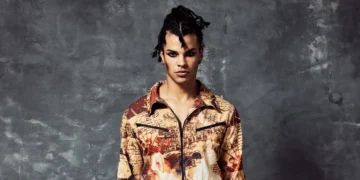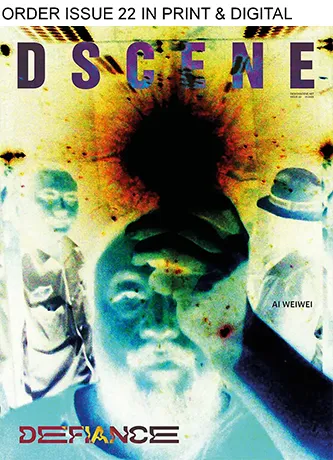
Carolina Sarria Fall Winter 2025 collection, The War of the Three Kingdoms, draws from an era of upheaval, reinterpreting the resilience of those caught in the crossfire. Between 1639 and 1651, England, Scotland, and Ireland were locked in conflict, reshaping power structures while devastating the common people. Among them, the Clubmen emerged, not soldiers, not mercenaries, but ordinary individuals fighting to preserve what little remained of their homes and dignity. Their defiance is woven into the fabric of this collection, where rebellion is no longer just survival but a form of self-expression.
The collection reflects the chaos of wartime survival through its materials. Distressed fabrics carry the marks of destruction, with charred textiles evoking scorched villages and battlefields. Silver and gold thread mimic the glint of armor, recalling the fleeting moments before swords met in combat. The use of mismatched tartans nods to fractured Scottish clans, once divided yet momentarily united in resistance. Raw-edge tailoring reinforces the idea of garments hastily assembled, as if pulled from the remnants of a battlefield.

This is clothing built on contrasts, unfinished yet deliberate, rugged yet ornate. Every stitch tells a story of struggle, every tear and fray a marker of survival. Rather than hiding the marks of war, the collection embraces them, turning damage into something powerful.
The attitude of the Clubmen informs the collection’s structure. The silhouettes refuse to conform, standing firm in their defiant, unyielding posture. Shapes pull from both historical references and modern streetwear, fusing elements of armor with contemporary rebellion. There is an undeniable punk energy in these designs, one that speaks not just to anarchy, but to ownership of identity.

Graphic prints stamped with 1637 act as both a historical marker and a prophecy, reminders of past struggles and warnings of those still to come. Like the Clubmen, who repurposed farm tools into weapons, the collection takes what is overlooked and transforms it into something forceful. Garments are not just worn, they are wielded.
Though inspired by a war centuries old, The War of the Three Kingdoms speaks to battles still being fought today. This is not armor for muskets and swords but for the fight for self-definition, for autonomy in a world that tries to erase or reshape identities. The rawness of the collection is intentional, a refusal to be polished or silenced.
Rebellion is no longer about the crown or the empire, it is about who gets to exist without being erased. Sarria’s vision channels the defiance of those who stood their ground, reworking their struggle into something that lives beyond history. The war, after all, is not over.




















